Theory
 Evaluation of the nurse's performance
Evaluation of the nurse's performance
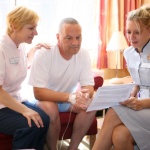 Stage V of the nursing process
Stage V of the nursing process
At the 5th stage of the nursing process (SP) there is a final assessment of the nurse's activities based on the achieved results of patient care.
Outcomes are continuously evaluated throughout the nursing process. Starting with the patient's identified problems, the nurse analyzes her activities and the patient's response to nursing interventions. Read completely "
 Stage 4 of the nursing process
Stage 4 of the nursing process

Stage IV of the nursing process
Implementation of the plan of nursing interventions, or stage 4 of the nursing process is defined as the implementation of the planned scope of actions aimed at achieving the set goals.
In order for the 4th stage of the nursing process to be carried out correctly, there are the following recommendations: read in full »
 Nursing Intervention Plan
Nursing Intervention Plan

Stage III of the Nursing Process
At the third stage of the nursing process, a plan of nursing interventions for further care of the patient. Planning is the process of setting goals (desired outcomes of care) and determining the scope of nursing interventions. Read completely "
 Nursing diagnosis
Nursing diagnosis

Stage II of the nursing process
At the second stage of the nursing process, the nursing diagnosis or identification of the patient's existing and potential problems is determined.
In contrast to the medical diagnosis, nursing diagnosis is most often not one due to several problems in the patient. Nursing diagnostics covers all areas of the patient's life, in connection with which nursing diagnoses are combined as: read more »
 Stages of the Nursing Process
Stages of the Nursing Process

Consider the main stages of the nursing processused in international and Russian practice.
Stage I - nursing examination of the patient . The nurse is engaged in the collection, analysis and evaluation of subjective and objective information about the patient. Read completely "
 Nursing examination of the patient
Nursing examination of the patient

Stage I of the nursing process
In addition to medical, there is a nursing examination of the patient as the first stage of the nursing process. At this stage, the nurse collects information about the patient using her senses:
- vision;
- hearing;
- smell;
- touch. Read completely "
 Contemporary Nursing
Contemporary Nursing

An integral part of today's health care is modern nursing - a field of activity aimed at solving individual and social problems of the population in constantly changing environmental conditions.
Modern nursing defined as the science and art of medical care for the patient, aimed at solving his problems:
- existing;
- potential. Read completely "
 Model V. Henderson
Model V. Henderson
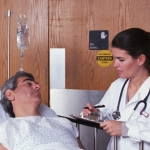
Virginia Henderson is a famous name in nursing. She is the author of the theory of nursing care.
The so-called additive-complementary nursing model of Henderson calls for directing the nurse's attention to helping the patient in his needs:
- physical, physiological;
- psychological;
- social. Read completely "
 Model D. Orem
Model D. Orem
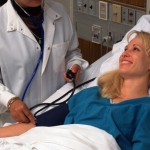
Introduced in 1971, Dorothea Orem's model is based on the principles of self-care , or self-care.
In this model of nursing, 3 groups of needs for self-care are distinguished:
1. Universal:
- sufficient intake of air, liquid, food;
- sufficient opportunities for allocation and process-related needs;
- balance between activity and rest, between communication and loneliness;
- prevention of danger to life and normal life in good health;
- the desire to correspond to a certain social group, based on individual capabilities.
 Model N. Roper
Model N. Roper
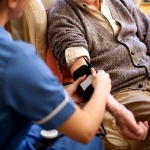
's sister model, co-authored with V. Logan and A. Tierney, is based on 12 types of daily human life. This includes both biological and social human needs.
- Safety.
- Communication.
- Breath.
- Consumption of food and liquids.
- Removal of unwanted body products.
- Personal hygiene.
- Comfortable body temperature.
- Physical activity.
- Work and leisure.
- Sexuality.
- Dream.
- Dying. Read completely "
 Model K. Roy
Model K. Roy
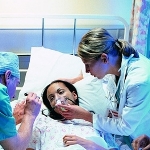
The adaptive model of K. Roy is based on the presence of a certain range of possibilities in which a person adapts to unusual states independently and with outside help. The possibilities of the body in this model:
- physiological;
- psychological.
Each person has a unique range of comfortable adaptation (both physiological and psychological). 's sisterly adaptation model defines the factors influencing the size of the adaptation range as stimuli. Read completely "
 Model D. Johnson
Model D. Johnson
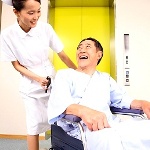
The sister model of D. Johnson is based on the correction of human behavior. According to the theory of this model, the patient is free to decide to change his behavior in order to achieve the goals:
- recovery;
- education;
- mastery of skills.
conceptual model identifies two areas of behavior:
- based on current events and people around;
- under the influence of established habits and stereotypes. Read completely "
 Model M. Allen
Model M. Allen

In medical publications, the M. Allen model (after the name of the author) is also called the McGill model (after the name of the university in Canada). Its development dates back to the 70s of the XX century, when the organization of primary medical care received wide support.
The foundation of Moira Allen's nursing model is health maintenance . Through the active participation of the patient himself and his relatives. Read completely "
 nursing models
nursing models
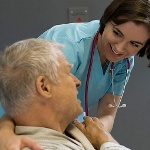
Consider the main models of nursing in medicine.
First, remember that a model is a role model. And nursing models define the essence of the nurse-patient relationship. The determining factor in the direction of any model is the patient and his problems with disability and the ability to self-service.
The main components in each model of nursing are:
 Types of healthcare facilities
Types of healthcare facilities
 Institutions providing medical care are called medical and preventive. The main types of health care facilities (treatment and preventive institutions):
Institutions providing medical care are called medical and preventive. The main types of health care facilities (treatment and preventive institutions):
- outpatient (institutions where medical and diagnostic assistance is provided to patients who do not need round-the-clock supervision);
- stationary (institutions providing medical and diagnostic assistance to patients in need of round-the-clock treatment, care and medical-protective regime).
Outpatient types of health facilities, in turn, are divided into several types. Read completely "